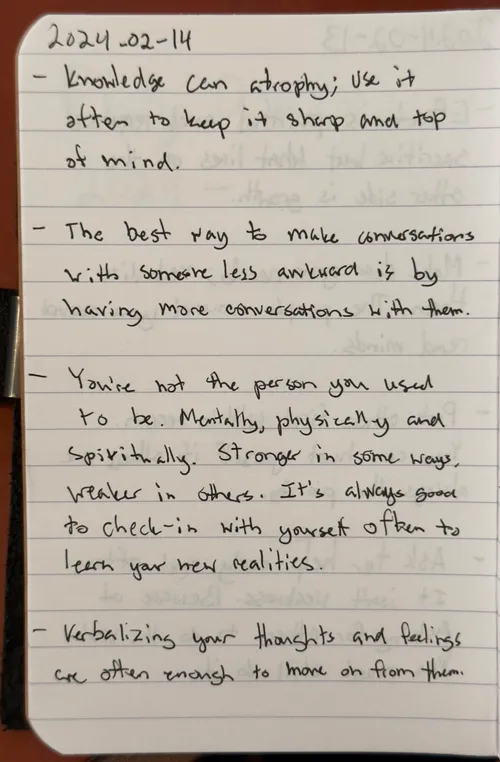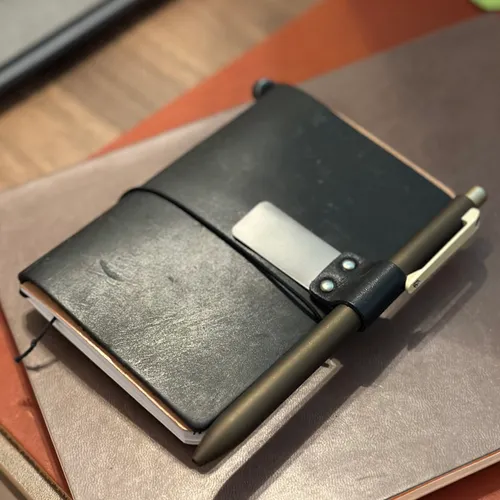Daily Postmortems
Journaling is something I’ve done on and off for ~8 years now. I’ve tried many shapes and mediums; the 5 minute journal, bullet journaling, gratitude journaling, morning pages and digital stream-of-conciousness mind dumping. Nothing has stuck, or has been as useful for me as what I call my Daily Postmortems.
I started them near the end of 2016, after reading Meditations by Marcus Aurelius. The format of his reflections really resonated with me, and I wanted to do something similar. After seeing the 5 minute journal and gratitude journaling in general, I wanted a similarly low-time-investment way to capture the things I’d thought about or learned in a day. Being very much in the memento mori stoic mindset, I called them the daily postmortem.
The daily postmortem isn’t innovative. It’s basically a bulleted list of 2–5 items (depending on journal size and my verbosity) of things I’ve learned, felt, or want to explore further.
Here’s what an entry looks like:

I’ve come back to this format pretty consistently since starting in 2016, and it’s the one format that I’ve found to be the stickiest for me. There are a few requirements that I’ve found for this format to be successful, though:
- It must be handwritten. Digital—even with stylus—doesn’t work as well for me. The kinetic memory just isn’t there.
- The journal must be A5 or smaller. Any larger and the format is asking you to be overly verbose. Size constraints help keep only the most impactful stuff.
- It has to be done in the evening while winding down. It’s the best way to tie on a bow on the day and eject thoughts before bed.
These “requirements” have come about because I’ve tried to re-incorporate these postmortems once or twice since stopping in 2017, but it’s never stuck quite the same way as it did back then. I realized that it’s because each time I”ve tried since, I deviated from one of those original constraints. The journal would be too big or I’d try to do it on my iPad or digitally. It just didn’t feel as good or give me the same effects as when I originally started, so I’d drop the habit after a few weeks.
Lately, I felt like my short-term memory was getting fuzzier, and that my thoughts were less clear in general. I remembered the feelings of clarity I had when I had started originally back in 2016, so I wanted to try again but replicate the original experience much more closely and get closer to the original constraints. Not that the specifics matters that much, but here are the tools I use now for those curious:
- Midori’s Traveller’s Notebook Passport size
- Midori’s Traveller’s Notebook pen holder clip
- Clairefontaine small notebook
- Tactile Turn Nitro pen w/ Pentel Energel refill (lefty’s will know)
Here’s an image for reference.

The size-restriction of the pocket notebook helps keep things focused. At minimum I’ll have two longer bullet points, at most I’ll have five. It’s easy to throw in a backpack or pocket, so I can travel with it easily.
Since I’ve started doing it again, it’s helped me reconnect with my days, my short-term memory feels stronger (the kinetic memory of writing with a pen probably helps, too), and I find I’m better able to sit with my thoughts. I’m getting excited about internal dialogue again, which is something I’d lost over the last few years.
If you’ve ever wanted to journal but felt scared by the blank page, maybe give this a try?